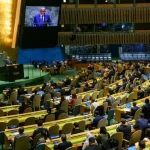Addis Ababa has grappled with water shortages for decades. The city’s water needs are primarily met by surface water sources like rivers and reservoirs. However, these sources are vulnerable to seasonal variations. Historically, reliable rainfall patterns replenished these sources. Today, however, climate change disrupts these patterns, leading to unpredictable water levels. Additionally, a growing population puts immense pressure on existing infrastructure. Leaks and inefficiencies within the Addis Ababa Water and Sewage Authority (AAWSA) distribution system are estimated to account for as much as non-revenue water loss.
The Deepening Crisis: Reports indicate a significant gap between water supply and demand. The AAWSA aims to deliver 1.2 million cubic meters of water daily. However, the reality falls short. Residents in many areas experience water rationing and frequent outages, leaving them with limited access to this essential resource. A 2020 study indicated that 90% of unmet water demand by 2030 is projected to occur under scenarios with high population growth rates and limited water source development.
Climate Change as a Threat Multiplier: Climate change acts as a threat multiplier, worsening the water crisis. Studies have shown a decline in average rainfall amounts in recent decades [4]. Erratic rainfall patterns lead to unpredictable water levels in reservoirs, while rising temperatures increase evaporation rates. This combination reduces the overall availability of water and makes it even more difficult to manage the existing resources.
The Human Cost: The consequences of water scarcity are far-reaching. Residents, especially those in informal settlements, often resort to unsafe water sources like shallow wells or streams, increasing the risk of waterborne diseases like cholera and typhoid. The lack of water also hampers sanitation efforts, creating hygiene challenges. Furthermore, limited water availability affects businesses and industries, hindering economic growth.
Seeking Solutions: The Ethiopian government and the AAWSA are working on solutions. These include exploring alternative water sources like groundwater, though wellfield studies show concerning yield decline due to factors like pump failure [5]. Improving infrastructure to reduce leakage and upgrading distribution networks are crucial steps. Promoting water conservation among residents through public awareness campaigns and implementing water-saving technologies in homes and businesses are also essential. Additionally, investments in rainwater harvesting and wastewater treatment are crucial steps towards long-term water security.
The Road Ahead: Addressing Addis Ababa’s water crisis requires a multi-pronged approach. Investing in infrastructure, addressing climate change concerns through sustainable practices, and fostering responsible water use habits are all necessary. The city’s future prosperity and the well-being of its residents depend on ensuring a sustainable and equitable water supply.





